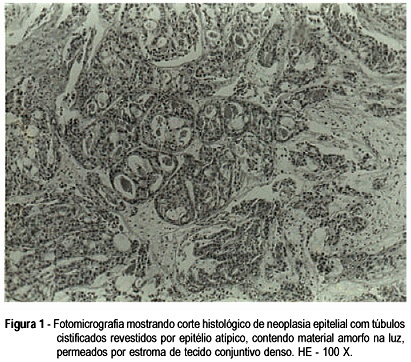Summary
Revista Brasileira de Ginecologia e Obstetrícia. 2018;40(1):47-52
Vaginal cancer is a rare entity. The evidence on its management resides mostly in clinical cases or small case series. Of the histological types, the most frequent is the squamous cell carcinoma, followed by adenocarcinoma. But what to do when identifying an even more infrequent sarcoma in a premenopausal woman? In this study, we describe the case of a 53-year-old woman presenting with metrorrhagia for two months, who was evaluated after an intense episode. A necrotic and ulcerative vaginal swelling was documented and then submitted to biopsy, which revealed a vaginal sarcoma. The patient was referred to radiation therapy with 50 Gy (aiming to control the symptoms and to cause tumor reduction for posterior pelvic exenteration with intraoperative radiotherapy) and developed an extra-pelvic metastization at the end of the treatment, which caused a fast negative outcome. Despite the initial poor prognosis, a chemo-irradiation or primary surgery regimen might have achieved (although with greater side effects) a better survival. This case-report entails a discussion about the strategies to manage vaginal sarcoma in advanced stage and in premenopausal women.

Summary
Revista Brasileira de Ginecologia e Obstetrícia. 1998;20(7):411-414
DOI 10.1590/S0100-72031998000700007
Clear cell adenocarcinoma of the vagina and cervix is a rare disease associated commonly with the use of diethylstilbestrol (DES) during pregnancy. The most commom complaint is irregular vaginal bleeding, which could be confused with vaginitis in children and abnormalities in the hypothalamic-pituitary axis in adolescents. We report a case of clear cell adenocarcinoma of the endocervix in a 7-year-old child who was attended at the Children and Adolescent Gynecology Sector, and we call attention to the diagnosis of genital cancer which, in spite of its rarity at this age, must be considered in children with genital bleeding.
